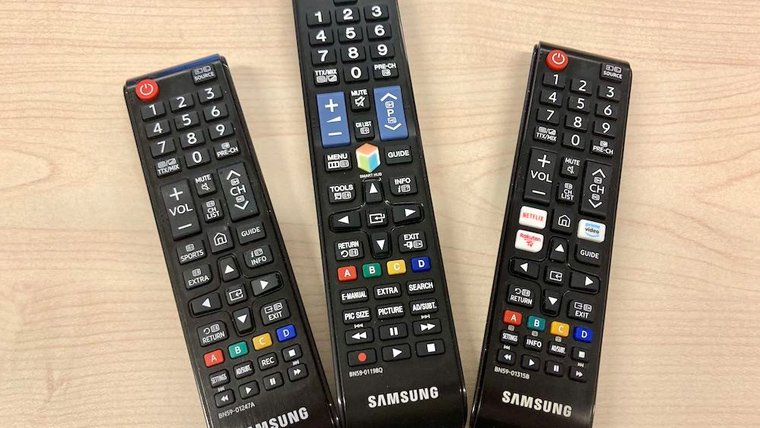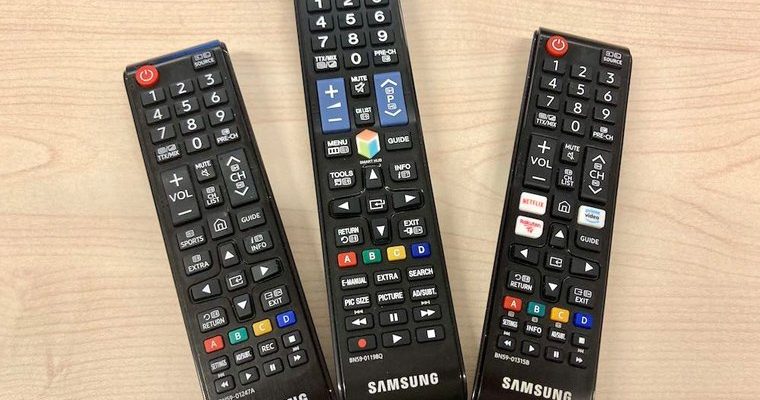
Honestly, programming a Samsung TV remote **should** be easy—like microwaving popcorn. But sometimes, things just don’t go as smoothly as the instruction manual promises. And if you’re new to this whole thing, the smallest mistake can turn your movie night into a full-blown troubleshooting adventure. Let’s break down why these mishaps happen—and more importantly, how you can avoid them. I’ll walk you through the most common programming pitfalls step by step, so grab your remote and let’s get those buttons working just the way you want.
Misunderstanding the Type of Samsung TV Remote
Alright, here’s the thing—Samsung doesn’t just make one kind of TV remote. There are several types: the classic button-filled remotes, the fancy Smart Remotes, and those minimalist One Remotes that look like they belong to a sci-fi movie. Each one handles programming a little differently, so knowing which one you have is half the battle.
Not every remote uses the same code or pairing method. Some need you to enter a code—usually a string of numbers—while others pair automatically with the TV via Bluetooth. If you mix up the method for your remote type, it’s sort of like trying to unlock your phone with your car key. Nothing happens, and you end up frustrated.
You might be wondering—how do I even know which remote I have? Usually, Samsung labels their remotes on the back or under the battery cover. Take a peek there if you’re not sure. If you’re using a universal remote instead of a Samsung-branded one, the setup process will be totally different, and you’ll need to look up the proper code for your TV model.
And let’s be real: sometimes people get excited and toss the packaging and quick start manuals right after unboxing. (Guilty as charged!) If that’s you, don’t worry—just check Samsung’s support website or hunt for your exact remote’s model number before diving into programming steps.
Entering the Wrong Programming Code
This is probably the most classic mistake. When you’re setting up the remote, you’re usually prompted to enter a specific programming code. Sometimes it’s on a sticker, sometimes it’s in the manual, and other times it’s online. But here’s where things go sideways:
- Typos are sneaky. Mixing up even a single number can mess up your sync attempt.
- Using the wrong code for the wrong remote or TV model never works—kind of like dialing the wrong phone number and expecting your friend to answer.
- Some universal remotes have “auto-scan” code searching, but honestly, it can take forever if you don’t pause on the right code.
If you enter the code and nothing happens—don’t panic! First, check if your batteries are fresh (more about that in a minute). Then, triple-check the code. Samsung’s support site and many tech forums have updated code lists, so double-check your TV’s specific model to avoid chasing your tail.
Let me explain something that tripped me up once: I accidentally mixed up my Samsung soundbar code with the TV code. They looked similar, but only the TV code actually worked. If you have Samsung gadgets stacked up, make sure you’re programming for the right device.
Not Resetting Before Re-Programming
Let’s say your remote used to work, but now it’s acting up. You swap batteries, you mash buttons, but still no luck. Here’s what most people (including myself, honestly) forget: old settings can trip things up. If your remote and TV are out of sync, or you try to reprogram without resetting first, you could be layering new instructions over old ones. That’s like trying to write a new story right over an old one—eventually, it just turns into a mess.
The fix? There’s almost always a reset sequence for both the remote and sometimes for the TV, too. For most Samsung TV remotes, you usually press and hold the Power button, or a combo like Back and Play/Pause, for about 5 seconds. The remote’s LED should blink, signaling a fresh start.
If you skip this, your remote might look like it’s paired, but it’ll act like it’s haunted—random buttons won’t work, or commands get laggy. I’ve wasted more time than I’d like to admit forgetting this step.
Skipping the Pairing Process (or Rushing It)
You wouldn’t believe how many times I’ve seen people point their remote at the TV, hit “Power,” and expect magic. (I’ve been there, too—no judgment.) But with Samsung’s newer Smart and One Remotes, you absolutely need to pair the remote to the TV before anything else happens.
Pairing normally means holding specific buttons (like Back + Play/Pause) close to the TV, and waiting for a message on the screen or a blinking LED on the remote. It’s like shaking hands before a meeting. If you rush this, or you’re too far from the TV, nothing gets synced and you’re left with a fancy plastic stick.
Failing to pair properly is probably the single most common Samsung TV remote programming mistake—it’s also the easiest one to overlook.
Sometimes, environmental stuff comes into play, too. If there’s interference from other wireless devices (game consoles, Bluetooth speakers, or even a crowded Wi-Fi channel), the pairing can get interrupted. If this happens, just move a bit closer and try again. And always, always wait for a confirmation message on the TV before moving on.
Overlooking Battery Issues
Batteries seem boring, but they’re often the real culprit when programming problems pop up. If your Samsung remote has low batteries, you might see weird glitches: buttons only half work, signals don’t get sent, or the setup process fails halfway through.
Here’s where beginners (and honestly, almost everyone) slip up:
- Using old or mismatched batteries. Don’t grab that off-brand battery from the junk drawer—remotes are picky!
- Inserting batteries the wrong way. Yeah, it happens. Check for that little + and – diagram inside the compartment before closing the back.
- Forgetting to fully seat the batteries. Sometimes if they’re wedged wrong, the remote won’t make a solid connection and your programming can glitch out.
If the remote starts acting up, swap in a fresh set of high-quality batteries before you do anything else. And if your remote has rechargeable batteries (some of the Smart remotes do), make sure it’s fully charged before you try to sync.
Not Following the Sequence of Programming Steps
Programming a Samsung TV remote almost always has a specific order: insert batteries, reset (if needed), pair (if needed), input code, and then test. If you jump ahead—say, trying to program before pairing, or entering a code while the battery is low—it’s like putting the cart before the horse. Nothing works quite right.
The manuals can be, well, less than gripping reads. But the sequence is super important because the TV listens for signals in a certain order. If you mix things up, the TV and remote may not “hear” each other right, and you’ll be stuck.
One thing to note: if you’re using a universal remote with your Samsung TV, their programming steps might differ entirely. Sometimes they need you to hold down a “set” or “mode” button and THEN enter the code. Always double-check the step-by-step for your specific remote—don’t just wing it and hope for the best.
Confusing Universal Remotes With Samsung Remotes
Let me say it—universal remotes sound awesome. One remote for everything? Less clutter on the coffee table? Yes, please. But universal remotes have their own list of codes and troubleshooting tips that are totally different from Samsung-brand remotes.
If you’re trying to program a universal remote, don’t use the Samsung factory instructions. These remotes come with a thick book (or a tiny, impossible-to-read pamphlet) of codes. Find “Samsung TV” in the list and plug in the code. If that doesn’t work, you often have to try the next code, and the next, until one sticks. Some remotes even let you “auto-search” through all possible codes—which, to be honest, is super tedious but sometimes the only way.
And here’s a pro tip: universal remotes may only cover the basics (volume, power, input), not every fancy function of your Samsung TV, especially with Smart features. If you want voice commands, Netflix buttons, or gesture controls, you’re better off sticking with the remote that came in the box.
Troubleshooting Without a Game Plan
Last but definitely not least—when your remote isn’t cooperating, it’s easy to panic and push every button in sight. Or you might try programming it ten times in a row, cross your fingers, and hope something changes. But without a clear troubleshooting plan, you could waste hours.
Here’s my honest advice: take it step by step. Fresh batteries, confirm remote type, reset, pair, then enter the correct code.
If the remote still refuses to work, try it on another Samsung TV (if you have one handy), or grab a friend’s remote and see if it pairs with your TV. That way, you know whether the issue is with the remote or the TV itself.
Sometimes, the solution is as simple as moving closer to the TV, checking for wireless interference, or restarting the TV itself. And honestly, if you’re really stuck, Samsung’s customer support is surprisingly helpful—don’t be afraid to pick up the phone or start a live chat.
Wrapping It All Up: Getting Your Samsung TV Remote Working Like New
Programming your Samsung TV remote doesn’t have to feel like defusing a bomb. Most mistakes—wrong code, skipped pairing, weak batteries—are simple to fix once you know what to look for. Just remember to slow down, check your remote type, follow the setup sequence, and don’t skip the reset if something’s not right. Universal remotes might add some extra steps, but with a little patience and the right info, you’ll get everything working smoothly. Movie night is waiting… so let’s get that remote sorted and keep the good times rolling!
